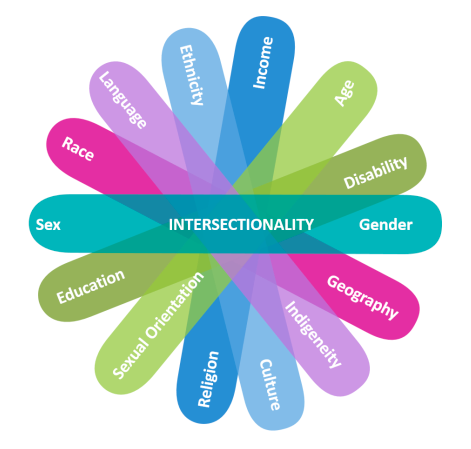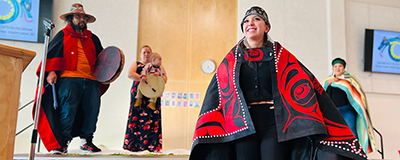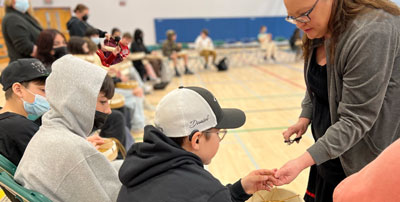Traditional Territory Acknowledgement:
91��ɫapps recognizes and acknowledges the Qayqayt First Nation, as well as all Coast Salish peoples, on who’s traditional and unceded territories we live, we learn, we play, and we do our work. The Board of Education of 91��ɫapps believes that acknowledging Traditional Territory is a way to honour and show respect to the original inhabitants of this land. This practice enables the wider school and district community to share in Aboriginal cultures and leads to better relationships and understandings.
At 91��ɫapps we’re deeply committed to continuing to improve upon how accessible our schools are – for students, staff and families. That includes working to meet new guidelines introduced across BC.
The Accessible British Columbia Act came into force in September 2022. The Act aims to increase all persons’ ability to meaningfully participate in their communities, and it aims to remove barriers through the development of accessibility standards. To do so, the Act requires that certain organizations, including school districts, make their organizations more accessible.
Understanding the History of Disability Rights
The history and journey of disability rights in Canada have been marked by considerable progress and advocacy over the years:
- In 1985, Canadian Human Rights Act was amended to include disability as a prohibited ground for discrimination, laying a legal foundation for change.
- In 1986, Persons with Disabilities were included in the new federal Employment Equity Act.
- In, 2006 Convention of Rights of Persons with Disabilities aimed at protecting the rights and dignity of persons with disabilities without discrimination and on an equal basis with others. Parties must promote and ensure the full enjoyment of human rights of persons with disabilities, including full equality under the law.
- In 2010, Canada ratified the United Nations Convention on the Rights of Persons with Disabilities (UNCRPD). By signing the UNCRPD, the Government of Canada committed to furthering the rights of persons with disabilities.
- In 2019, The Accessible Canada Act (ACA) came into force in 2019, with the overarching goal of realizing a barrier-free Canada by 2040
- In 2019, the provincial government engaged in widespread consultation through an Accessibility Legislation Consultation Advisory Committee. The Committee concluded that British Columbia strongly supported the development of accessibility legislation and that more needed to be done to move towards an environment that was inclusive of all people, especially in education and employment.
- In 2021, The Accessible BC Act was created to improve opportunities for people with disabilities and involve them in identifying, removing, and preventing barriers to their full participation in the life of the province.
- In 2022, the Accessible British Columbia Act came into force. It applies to prescribed organizations including school districts and independent schools as of September 1, 2023.
Accessibility British Columbia Act Plan
The British Columbia Accessibility Act aims to increase all persons’ ability to meaningfully participate in their communities by attempting to remove barriers through the development of accessibility standards. . The act requires certain organizations, including school districts and independent schools, to make their organizations more accessible. The key objectives are:
- To increase meaningful participation in communities.
- Develop standards for improved services delivery in areas such as education, including critical infrastructure like entranceways, playgrounds, sidewalks, accessible transportation, employment opportunities, etc.
- Harmonization with other jurisdictions, including federal requirements.
The act mandated that provincial school districts and independent schools must develop by September 1, 2023
- An Accessibility Committee;
- An Accessibility plan; and,
- A tool to receive feedback on accessibility, such as an email to receive comments.
Accessibility Advisory Committee at 91��ɫapps:
Each School district and independent school must create an accessibility committee who will assist the organization in identifying barriers and advise on how to remove and prevent future barriers to those individuals in the organization and to those who interact with the organization. The committee may include members from inside or outside of the organization. Committee membership should ideally reflect the diversity of persons in BC and have at lease on Indigenous person, and half of the members should ideally:
- Be persons with disabilities; or
- Represent an organization that supports persons with disabilities.
Committee members must be focused on progress towards objectives and best practices towards removing and preventing barriers. They must also be committed to supporting the accessibility plan.
Current members of the 91��ɫapps Accessibility Advisory Committee are:
- Dave Bolan – CUPE
- Kelly Shields – NWTU
- Anne Belanger – Parent
- Salimah Haji – Kinsight Coordinator, Supported Child Development
- Zahra Lalani – SHARE
- Maniya Rafiei – Manager, Settlement Workers in Schools
- Karen Bower – CUPE, NWS
- Kenneth Headley – District VP, Diversity, Equity, Inclusion, and Antiracism, NWS
- Connie Swan – District VP, Indigenous Education, NWS
- Rhonda Jones – Director of Instruction – Inclusive Education, NWS
- Student(s) joining in the fall
As the advisory group engages deeper into the accessibility plan, they will share recommendations to the staff working on an ongoing basis.
The Accessibility Advisory Committee will meet on the following dates for the upcoming 2023/2024 school year:
- Wednesday November 29th 3:30-4:30pm
- Wednesday February 28th 3:30-4:30pm
- Wednesday May 1st 3:30-4:30pm
Accessibility Plan at 91��ɫapps
In 2020, our district went through an extensive engagement process for our Inclusive Education Review. We heard from our community about and have since begun to implement the recommendations. This alignment works well with our Accessibility Plan. Please read our Inclusive Education Review Action Plan here: Inclusive Education Review for our priorities and progress. This document will act as a foundational guide for our Accessibility Advisory Committee to see where we have grown, and where we need to focus on moving forward.
Inclusive Education Action Plan – Planning for 2023-2024
Vision – A place where student love to learn
Mission – To enable each student to learn in a safe, engaging, and inclusive environment.
Values – inclusion – Learning where all people are welcomed, respected, and supported.
 Areas of focus:
Areas of focus:
Universal Design for Learning
CB IEP implementation
Literacy universal screening & Tiered Response to Intervention
Parent Feedback
Home / School Partnerships
Parent survey – Fall 2023.
Provide an opportunity for families to identify areas of growth in how we are supporting students with disabilities and diverse abilities.
Effective Student Supports
Universal Design for Learning
Building on our work with Jennifer Katz staff will be engaged in working with Katie Novak this year.
Curriculum Facilitators – Inclusive Education will continue training Learning Support Teachers as we begin implementation of Competency Based Individual Education Plans.
We also engaged in another engagement process that shared our journey and the work needed for our district regarding Diversity, Equity, Inclusion and Antiracism. Our shared understanding and new learning have resulted in us taking an intersectional approach to this work.
 Intersectionality and accessibility intersect in the pursuit of creating a more inclusive and equitable society. Intersectionality acknowledges that individuals may experience multiple layers of discrimination and privilege simultaneously, such as race, gender, disability, and more. When addressing accessibility, it’s crucial to consider how these intersecting identities can compound barriers or create unique challenges for certain groups. For example, a disabled person who is also a member of a racial or gender minority may face different and more complex obstacles in accessing education, employment, or public spaces.
Intersectionality and accessibility intersect in the pursuit of creating a more inclusive and equitable society. Intersectionality acknowledges that individuals may experience multiple layers of discrimination and privilege simultaneously, such as race, gender, disability, and more. When addressing accessibility, it’s crucial to consider how these intersecting identities can compound barriers or create unique challenges for certain groups. For example, a disabled person who is also a member of a racial or gender minority may face different and more complex obstacles in accessing education, employment, or public spaces.
Recognizing intersectionality in accessibility means tailoring solutions to accommodate the diverse needs and experiences of marginalized communities. It involves not only physical accessibility but also could also involve barriers from digital, social, and economic inaccessibility.
By adopting an intersectional approach, we can better address systemic inequalities and ensure that accessibility initiatives are truly inclusive and equitable for everyone, regardless of their intersecting identities. In this way, intersectionality enriches the conversation and practice of accessibility, promoting a more just and inclusive society for all.
We are completing our Diversity, Equity, Inclusion Antiracism Framework, and you will notice that we will focus on removing barriers systemically for students, families, and communities to engage with us in their most authentic ways which will include objectives connected to Inclusion and Accessibility.
What’s happening at 91��ɫapps?
Our Accessibility Advisory Committee will be overseeing the development of an Accessibility Plan, as part of the next phase of this work.
If you have feedback you would like staff and the Committee to consider, please use the below form to help us identify where there are known barriers that you or others in our community may be experiencing.



